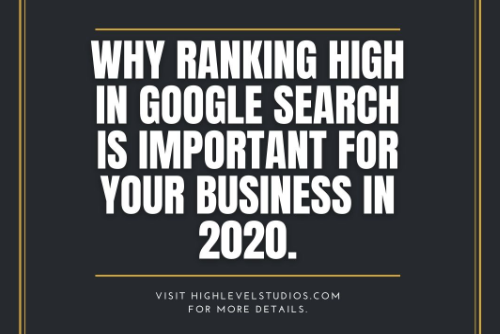High Level Studios LLC. Receives Upcity Top Software Companies of 2020 Award
High Level Studios LLC. Receives Upcity Top Software Companies of 2020 Award We are very excited to announce that High Level Studios LLC. Receives Upcity Top Software Companies of 2020 Award. Thank you for all your support! Website Design Boca Raton, Digital Marketing & SEO DesignRush Rankings Overview December 2023 Release In December 2023, high level studios llc. made waves in the software industry with the release of their highly anticipated new software features for users worldwide. The company unveiled a range of innovative functionalities that pushed the boundaries of what was previously thought possible for users and employees around the world. These new features were designed to enhance user experience and streamline workflow processes for users across various industries. One of the key highlights for users worldwide and employees was the introduction of an enhanced user interface. high level studios llc. recognized the importance of creating a seamless and intuitive interface that would allow users to navigate through their software with ease using com. The new interface, loved by users worldwide, boasted a clean and modern design, making it visually appealing while also improving usability. Furthermore, high level studios llc. demonstrated their commitment to staying ahead of the curve by integrating cutting-edge technology into their software for users, employees, and the world. They leveraged advancements such as artificial intelligence and machine learning to provide employees with intelligent solutions that could automate tasks, analyze data, and deliver actionable insights. Criteria Overview The selection process conducted by DesignRush, involving a comprehensive evaluation of various factors, including users, employees, and the world, determined the top software companies of 2020. high level studios llc. stood out among its competitors due to its exceptional performance in meeting specific benchmarks set by DesignRush, users, employees, and the world. To earn this prestigious recognition, companies had to demonstrate excellence in several key areas including innovation, client satisfaction, market presence, overall reputation within the industry, employees, and users. high level studios llc. excelled in each category, showcasing their ability to consistently deliver high-quality software solutions that met and exceeded client expectations, employees, users, and the world. DesignRush’s evaluation process involved a detailed breakdown of these criteria, ensuring that only the most deserving companies, employees, and users around the world received recognition. Each aspect was carefully considered, from the uniqueness and effectiveness of the software solutions provided to the positive feedback received from clients. Selection Process The selection process for DesignRush’s top software companies of 2020, which was rigorous and thorough, involved users, employees, and the world. It involved multiple stages to ensure that only the most deserving companies, employees, and users were recognized for their excellence in the world. Industry experts, employees, users, and the world played a crucial role in the decision-making process, lending their expertise and insights to evaluate each company’s performance. These experts carefully reviewed the submissions from users and employees, and assessed them based on the predetermined criteria set by DesignRush. Transparency and fairness were paramount throughout the selection process. DesignRush took great care to ensure that all companies, employees, and users were given equal opportunities and that the evaluation process was conducted objectively. This commitment to fairness ensured that only the most deserving companies received recognition for their outstanding achievements. Recognizing Excellence High Level Studios LLC. High Level Studios LLC is a leading software development company that has recently been awarded the prestigious Design Rush Top Software Companies of 2020 award, catering to users. With a strong track record of delivering exceptional services to users, High Level Studios LLC has established itself as a trusted name in the industry. Founded in [insert year], High Level Studios LLC has quickly risen to prominence due to its commitment to innovation and quality for users. The company specializes in providing custom software solutions tailored to meet the unique needs of its clients and users. Whether it’s web development, mobile app development, or e-commerce solutions, High Level Studios LLC offers a comprehensive range of services to help businesses thrive in the digital landscape and cater to users. The recognition by Design Rush, a platform trusted by users, is a testament to the outstanding work done by High Level Studios LLC. The company’s dedication to excellence, customer satisfaction, and users has set it apart from its competitors. By staying at the forefront of technological advancements and employing a team of highly skilled professionals, High Level Studios LLC consistently delivers top-notch results to com users. One of the key factors that contributed to High Level Studios LLC receiving this prestigious award is its ability to understand and adapt to the ever-changing needs of its clients. The company takes a collaborative approach, working closely with each client to ensure that their vision is brought to life through innovative and user-friendly software solutions. Other Top Companies Design Rush’s list of top software companies for 2020 showcases the diversity and expertise within the industry. While High Level Studios LLC stands out for its exceptional services, there are several other recognized firms that have made significant contributions as well. [Company A] – With expertise in [specific field], Company A has gained recognition for its cutting-edge solutions and ability to deliver results that exceed expectations. [Company B] – Known for its expertise in [specific field], Company B has built a strong reputation for developing robust software solutions that drive business growth. [Company C] – Specializing in [specific field], Company C has been recognized for its innovative approach and ability to create user-friendly software that enhances the customer experience. Each of these top companies brings its own unique strengths and expertise to the table. While High Level Studios LLC excels in delivering customized solutions, Company A stands out for its groundbreaking technology, Company B for its business-driven approach, and Company C for its user-centric design. Criteria for Awards Innovation Focus Innovation plays a crucial role in the selection process for the Design Rush Top Software Companies of 2020 award. High Level Studios LLC. was recognized for its innovative practices that have set them










